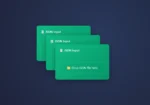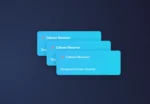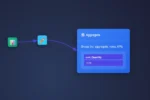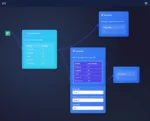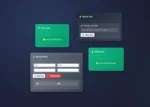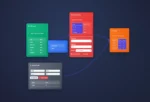Imagine unlocking a granular understanding of your users—not just what pages they visit, but the organic, session-based journey each person takes across your digital landscape. At Dev3lop, we view sessionization as the strategic foundation to truly actionable clickstream analytics. While it may seem just a way to group user actions, effective sessionization is transformative. It empowers data teams to move beyond raw log analysis to meaningful behavioral segmentation, personalized experiences, and ultimately, deeper business insights. In this article, we demystify sessionization, explore why it’s vital for decision-makers, and outline tactical approaches for modern event-driven data pipelines.
What Is Sessionization, and Why Does It Matter?
Sessionization is the process of grouping sequences of user events into discrete “sessions” based on logical rules—most commonly, activity within a time window or the presence of session identifiers. Without sessionization, clickstream data is simply a long, unordered list of page views, clicks, or other events. By assigning context and boundaries to user behavior, organizations unlock a new dimension of analytics: time-based engagement, conversion funnels, and cross-platform journeys become visible and measurable.
For data strategists and business leaders, sessionization elevates analytics efforts in ways that manual reporting never could. It is the bedrock of everything from accurate personalization algorithms to robust inventory and demand analysis seen in inventory optimization visualization. If you’re seeking to break free from repetitive manual data tasks and harness automated behavioral reporting, mastering sessionization is non-negotiable. As we progress deeper into real-time architectures and omnichannel analytics, this foundational process becomes essential to resilient, decision-driven data operations. For a broader strategy shift, see why data warehouses are critical for breaking free from manual reporting loops.
Challenges in Sessionizing Event Streams at Scale
In today’s digital environment, data pipelines process millions of events every minute—often in real time and across distributed systems. Sessionizing this constantly flowing clickstream data presents hurdles that can’t be solved with batch processes alone. Key difficulties include identifying unique users across devices, ensuring that session boundaries make sense (especially with mobile or multi-touch journeys), and handling late-arriving or out-of-order events. Integrating with downstream systems, evolving your schema as new event types appear (schema evolution handling), and balancing processing cost versus real-time needs compound the complexity.
Yet, innovation here is not optional. Organizations must adapt to streaming-first architectures and shift their talent toward proactive monitoring, anomaly detection, and behavioral analytics. As highlighted in batch is comfortable, but stream is coming for your job, the future belongs to those executing fast, robust sessionization directly in their event pipelines. By consulting with experts that specialize in data engineering consulting, teams can transform these challenges into competitive advantages, unleashing smarter, faster data products.
Building Reliable Sessionization Pipelines: Best Practices and Innovations
Effective sessionization starts with a well-designed streaming or batch pipeline. Leading teams implement robust user identification, set dynamic session timeout rules, and build in handling for ambiguous events (e.g., logins, background tabs). Leveraging solutions such as event stream processors, cloud data warehouses, and flexible ETL frameworks is crucial for scalability.
Version control and release management become particularly important as data definitions and session logic evolve. For managers and architects, investing in modern DevOps for pipelines—as outlined in pipeline version control and release management—makes undocumented changes or regressions far less likely. And with more organizations routing authentication data (see how to send Auth0 data to Google BigQuery using Node.js), there’s greater potential to enrich sessions with identity and behavioral context.
Finally, modern sessionization pipelines unlock the storytelling potential buried within clickstream data. By integrating session output into scrollytelling narrative visualization tools, organizations present actionable narratives to executives, marketers, and product teams—inspiring data-driven decision-making at every level.
Conclusion: Elevate Your Business with Advanced Sessionization
Sessionization in clickstream event processing is far more than a technical checkbox. For forward-thinking teams, it’s the lever that shifts analytics from descriptive to prescriptive, enabling everything from real-time personalization to holistic customer journey mapping. By understanding and addressing the nuanced challenges of event stream sessionization—in both process and pipeline architecture—your organization can stay ahead of the innovation curve.
Our consultants at Dev3lop thrive at the intersection of data engineering and business strategy. Whether you’re just beginning to centralize your clickstream events or ready to build interactive, session-driven data products, our experience with scalable, robust analytics pipelines ensures your success. Let’s turn millions of raw events into a narrative your whole business can act on.
Thank you for your support, follow DEV3LOPCOM, LLC on LinkedIn and YouTube.








